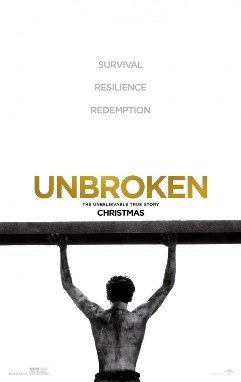Most have taken for granted Jesus' nativity story as commonly related - that when Joseph and Mary arrived in Bethlehem there was no room in an inn so Mary ended up giving birth to Jesus in a stable. But is this the true account in Scripture? See for yourself!

The Greek word translated "inn" in Luke 2:7 refers to a guest room.
Source: Scott Ashley/Explorations in Antiquity Center, LaGrange, GA.
A typical translation of
Luke:2:7 says about Mary giving birth to Jesus, "And she brought forth her firstborn Son, and wrapped Him in swaddling clothes, and laid Him in a manger, because there was no room for them in the inn" (New King James Version).
We've grown up hearing the account that the "inn" in Bethlehem was full, with no "room" available, so Joseph and Mary ended up in a stable, with Jesus Christ born and laid in a manger there. This image has been used to promote the typical Christmas nativity scene for generations. Yet a careful analysis of the biblical text reveals quite a different story!
Not an inn but a guest room
The New Testament was originally written in Greek, and the Greek word translated "inn" here is
kataluma. It means a place of rest, usually a guest room. In fact, the same writer Luke uses this very word later where it clearly refers to a guest room and not an inn. Notice
Luke:22:11, where Jesus said to His disciples, "Then you shall say to the master of the house, 'The Teacher says to you, "'Where is the
guest room [
kataluma ] where I may eat the Passover with My disciples?"'" (emphasis added throughout).
Furthermore, Luke elsewhere in his Gospel uses a
different Greek word when he writes about an actual inn—
not the word
kataluma. In the parable of the Good Samaritan, Jesus mentions that the injured man in the story was taken to an inn—and here Luke translates using the Greek word
pandokheion, the normal word for an inn. We read this in
Luke:10:34, where the kind Samaritan set the injured man "on his own animal, brought him to an
inn, and took care of him."
Interestingly, the Arabic and Syriac versions of the New Testament, which reflect more of a Middle Eastern context, have never translated
kataluma as meaning an inn, but instead as a guest room. As Kenneth Bailey, a Middle Eastern and New Testament scholar points out, "This translation [of the word as 'inn'] is a product of our Western heritage" ("The Manger and the Inn: The Cultural Background of
Luke:2:7,"
Bible and Spade, Fall 2007, p. 103).
In addition,
Young's Literal Translation uses the term "guest-chamber" instead of an inn. It says: "And she brought forth her son—the first-born, and wrapped him up, and laid him down in the manger, because there was not for them a place in
the guest-chamber ."
Note also the word here translated "place" or "room." In the context of "inn," most assume this is referring to an individual room ("no
room in the inn"), yet even inns of that time did not often have individual rooms. The reference is simply to
space. What Luke is telling us is that there was not enough room, or enough
space, for them in the guest room.
The linguistic evidence shows that Luke used the term
kataluma to mean not an
inn, but the
guest room— indeed, "the" guest room (the definite article is used) of a particular house.
Historical factors
The International Standard Bible Encyclopedia, after pointing out that the word
kataluma is used elsewhere in the Gospels for the guest chamber of a private home, comments: "Was the 'inn' at Bethlehem, where Joseph and Mary sought a night's lodging, an upper guest room in a private home or some kind of public place for travelers? The question cannot be answered with certainty. It is thought by some that it may have been a guest chamber provided by the community.
We know that visitors to the annual feasts in Jerusalem were entertained in the guest rooms of private homes" (1982, Vol. 2, "Inn," p. 826).
Another factor that powerfully argues against this term meaning an inn is that these places were not appropriate to giving birth to a child. Inns at that time were far from anything like typical motels or hotels we might think of today. "Generally speaking, inns had a bad reputation . . . This ill repute of public inns, together with the Semitic spirit of hospitality, led the Jews and the early Christians to recommend the keeping of an open house for the benefit of strangers" (ibid.).
Besides, for commercial reasons inns were usually found along the major roads. Yet Bethlehem was a small town in the upper mountains of Judea, and no major Roman road is known to have passed through it. Since it seems to have been an insignificant village at the time, it's doubtful that an inn even existed there then.
This gives yet more reason to realize that what Luke really wrote is that there was
no room in the guest chamber. Certainly, due to the Roman census being taken at the time and the huge number of people traveling to their birthplaces, available space in the guest quarters was scarce.
So the question then becomes: Does that mean Joseph and Mary aimed to stay in someone's home but, since the guest room was full, were turned out into the night to a stable? When Mary was in labor? That might seem worse than being turned away from an inn. Of course, both scenarios seem rather terrible—certainly downright inhospitable, which is far out of line from the way things were at that time.
A culture of hospitality and honoring kinship
In Christ's day, hospitality to visitors among the Jews was essential, based on biblical example and law. In
Deuteronomy:10:19, God told the Israelites to "love the stranger." And
Leviticus:19:33 stated, "If a stranger dwells with you in your land, you shall not mistreat him." Denial of hospitality was shown throughout Scripture to be an outrage. Hospitality toward visitors is still important throughout the Middle East.
Moreover, since Bethlehem was Joseph's ancestral home, he probably had relatives there. And being a descendant of King David, whose hometown this was, he would have been highly respected upon his arrival. Think of a descendant of George Washington coming to his hometown of Alexandria, Virginia, after a long lapse of time. The townspeople would've shown him respect.
As Bailey explains: "[My] thirty-year experience with villagers in the Middle East is that the intensity of honor shown to the passing guest is still very much in force, especially when it is a returning son of the village who is seeking shelter. We have observed cases where a complete village has turned out in a great celebration to greet a young man who has suddenly arrived unannounced in the village, which his
grandfather had left many years before" (p. 103).
It should also be pointed out that childbirth was a major event at that time. In a small village like Bethlehem, many neighboring women would have come to help in the birth. Bailey states: "In the case of a birth, the men will sit apart with the neighbors, but the room will be full of women assisting the midwife. A private home would have bedding, facilities for heating water and all that is required for any peasant birth" (p. 102).
What this all means is that it would have been unthinkable and an unimaginable insult and affront to societal decency for Joseph, a returning village son, and his laboring wife to need to seek shelter in an unsavory inn to have a baby of Davidic descent—and then, even worse, to be sent out to have the birth in a stable. This simply cannot be what happened. Nor can it be that they were sent out into the night from a private home.
So what actually happened?
Reading the text carefully
Regrettably, the birth of Christ is later overlaid with so much tradition and legend about Christmas that it's hard to let the biblical text speak for itself.
The common assumption is that Joseph and Mary arrived in Bethlehem and, being hastened by her labor pains, rushed to an inn only to find it full with no vacancies, so they ended up in a stable where she gave birth.
However, a careful reading of the text shows us
they had already been in Bethlehem for some days when she went into labor. Notice carefully
Luke:2:4-6: "Joseph also went up from Galilee, out of the city of Nazareth into Judea, to the city of David, which is called Bethlehem, because he was of the house and lineage of David, to be registered with Mary, his betrothed wife, who was with child. So it was, that
while they were there, the days were completed for her to be delivered."
Consequently, they must have already been lodging somewhere in Bethlehem when her birth pangs began—and this was surely not a stable for a period of days. Could not Joseph have found a more suitable lodging place for his pregnant wife in that amount of time? Of course.
In fact, we should realize that not far from here dwelt Mary's cousin Elizabeth, whom Mary had lived with for a while during her pregnancy (
Luke:1:39-40). If they were seeking a place to stay for days, why didn't they go to Elizabeth's house? The answer is simple. They found a house in which to stay in Bethlehem—probably that of Joseph's relatives.
And being in these accommodations already, it makes no sense for them to suddenly be out seeking a room in an inn or anywhere else at the time of Mary's labor.
Yet we might still be asking: So why were they sent out to a stable? The answer is,
they weren't.
Birth in a house, not a stable
The Archaeological Study Bible offers some helpful background: "The 'manger' was the feeding trough of the animals.
This is the only indication that Jesus was born in a stable. Very early tradition suggests that his birthplace was a cave, perhaps being used as a stable.
" Justin Martyr in the second century A.D. stated that Jesus' birth took place in a cave close to the village. Over this traditional manger site the emperor Constantine (A.D. 330) and his mother, Helena, constructed the Church of the Nativity" (2005, p. 1669).
Note that it is only the manger, an animal food or water trough, that gives any indication of a stable. And indeed a manger might well have been found in a stable. But it's important to realize that they were also to be found within first-century homes!
A typical Judean house of that day consisted of an area near the door, often with a dirt floor, where the family's animals were kept at night—so they wouldn't be stolen or preyed upon and so their body heat could help warm the home on cool nights. The family lived and slept in a raised part of the same room set back from the door. There was also usually a guest room either upstairs on a second floor or adjoining the family common room on the lower floor. Typically the lower area near the door had a manger for food and/or water for the animals.
Eric F.F. Bishop, an expert in Middle East culture, noted that the birth of Christ probably took place in "one of the Bethlehem houses with the lower section provided for the animals, with mangers 'hollowed in stone,' the dais [or raised area] being reserved for the family. Such a manger being immovable, filled with crushed straw, would do duty for a cradle. An infant might even be left in safety, especially if swaddled, when the mother was absent on temporary business" (
Jesus of Palestine, 1955, p. 42).
Yet another authority on Middle Eastern life, Gustaf Dalmann, stated: "In the East today the dwelling-place of man and beast is often in one and the same room. It is quite the usual thing among the peasants for the family to live, eat, and sleep on a kind of raised terrace . . . in the one room of the house, while the cattle, particularly donkeys and oxen, have their place below on the actual floor . . . near the door; this part sometimes is continued along under the terrace as a kind of low vault. On this floor the mangers are fixed, either to the floor, or to the wall, or at the edge of the terrace" (
Sacred Sites and Ways, 1935, p. 41).
This scene of an ox or donkey in the house at night might go against our Western sensibilities. Yet, as Bailey comments: "It is we in the West who have decided that life with these great gentle beasts is culturally unacceptable. The raised terrace on which the family ate, slept and lived was unsoiled by the animals, which were taken out each day and during which time the lower level was cleaned. Their presence was in no way offensive" (p. 105). Of course, the animals could have been taken outside when the actual birth was occurring.
Consider that the medium of En Dor whom King Saul sinfully consulted with "had a fatted calf
in the house," which she killed to prepare a meal for Saul and his men (
1 Samuel:28:24). It was more often the wealthy who had stables for their animals apart from the house.
Thus, a more realistic view of what occurred with Christ's birth according to the customs of the time is that the manger was in a house and not in a stable. It should be stated that this could conceivably have involved a cave, but that's only because some houses were built over caves. Yet this was not the norm. And the cave imagery may come from pagan myth about the Persian sun-god Mithras, who was supposedly born in a cave—along with the belief of some that Christ's birth had to have been in seclusion, as we will see.
The pieces fall into place
What we've seen so far explains a great deal.
Some might object that Mary and Joseph being accommodated in the family common room of a house instead of the guest room is itself inhospitable. But as Bailey points out: "No unkindness or lack of hospitality is implied when the Holy Family is taken into the main family room of the home in which they are entertained. The guest room is full. The host is not expected to ask prior guests . . . to leave. Such would be quite unthinkable and, in any case, unnecessary. The large family room is more appropriate in any case" (p. 104).
Indeed, considering all the women that would be going in and out of the room during the birth, having Mary stay in the main room would probably have seemed the wisest choice to everyone concerned. In fact, it's possible that Luke's mention of there being no room or space meant that this particular guest room was too small for all the birth activity.
Bailey continues in regard to understanding
kataluma as meaning the guest room: "This option admirably fulfills both the linguistic requirements of the text and the cultural requirements of the village scene. This translation gives new understanding to the story of Jesus' birth. Joseph and Mary arrive in Bethlehem. They find shelter with a family whose separate guest room is full [or too small], and are accommodated among the family in acceptable village style. The birth takes place there on the raised terrace of the family home, and the baby is laid in a manger . . .
"The (Palestinian) reader [of Luke's account] instinctively thinks, 'Manger—oh—they are in the main family room. Why not the guest room?' The author instinctively replies, 'Because there was no place for them in the guest room.' The reader concludes, 'Ah, yes—well, the family room is more appropriate anyway.' Thus, with the translation 'guest room,' all of the cultural, historical and linguistic pieces fall into place" (p. 104).
The reaction of the shepherds
Another element of the story that reinforces the picture here is that of the shepherds who received the announcement of the birth of the Savior, the Lord Messiah, and where to find Him that night from an angel (
Luke:2:8-11). As men of the lower ranks of society, they may not have felt they would be received well in visiting a king, but the angel told them that as a sign they would find the child lying in a manger (verse 12).
"That is," says Bailey in an insightful book he has written, "they would find the Christ child in an ordinary peasant home such as theirs. He was not in a governor's mansion or a wealthy merchant's guest room but in a simple two-room home like theirs" (
Jesus Through Middle Eastern Eyes: Cultural Studies in the Gospels, 2008, p. 35).
Luke's account further states that the shepherds "came with haste and found Mary and Joseph, and the Babe lying in a manger" (verse 16). On arriving they made "widely known" what had been announced to them (verse 17)—showing that there were many people there. And when they left, they went out "praising God for
all the things that they had heard and seen" (verse 20).
Bailey points out: "The word
all obviously included
the quality of the hospitality that they witnessed on arrival. Clearly, they found the holy family in perfectly adequate accommodations, not in a dirty stable. If, on arrival, they had found a smelly stable, a frightened young mother and a desperate Joseph, they would have said, 'This is outrageous! Come home with us! Our women will take care of you!'
"Within five minutes the shepherds would have moved the little family to their own homes. The honor of the entire village would rest on their shoulders and they would have sensed their responsibility to do their duty. The fact that they walked out, without moving the young family, means that the shepherds felt they could not offer better hospitality than what had already been extended to them" (pp. 35-36, emphasis in original).
Where does this leave us?
So what are the implications of upending the traditional view of the Christmas nativity scene?
We should first ask, given the facts we've seen, why has there been such an insistence since early centuries that the birth setting of Christ was a stable or cave with no one around—perhaps even outside the town, as some have even contended?
Bailey reveals: "After reading a number of Arabic and Syriac fathers' writings on the question, one has the distinct feeling there is an unspoken subjective pressure to understand the birth as having taken place without witnesses because of the sacred nature of the 'mother of God' giving birth to the 'Son of God.'
"Even as the sacraments are consecrated in utter seclusion behind an altar screen, so the eyes of even the faithful might not look on the holy event, even so Middle Eastern Christology, Mariology and piety seem to combine to insist that the birth took place where no eye beheld the divine mystery" ("The Manger and the Inn," p. 105).
Yet this is a fiction straight out of ancient pagan mystery religion. The reality is quite different, as we've seen. While Jesus was conceived of God the Father through the Holy Spirit, His was nonetheless a typical birth for the common man of His day. Though begotten of God, He truly came as one of us.
As for the common tradition, Kenneth Bailey concludes: "We all face the enormous weight of church tradition which surrounds us with the 'no room at the inn' mythology. If our conclusions are valid, thousands of good Christmas sermons, plays, filmstrips, films, poems, songs and books will have to be discarded.
"But is the traditional myth of a lonely birth in a stable a help or a hindrance to the reality the text proclaims? Surely a more authentic cultural understanding enhances the meaning of the story, rather than diminishing it.
"Jesus was rejected at His birth by Herod, but the Bethlehem shepherds welcomed Him with great joy, as did the common people in later years. The city of David was true to its own, and the village community provided for Him. He was born among them, in the natural setting of the birth of any village boy, surrounded by helping hands and encouraging women's voices.
"For centuries Palestinian peasants have been born on the raised terraces of the one-room family homes. The birth of Jesus was no different. His incarnation was authentic. His birth most likely took place in the natural place for a peasant to be born—in a peasant home" (pp. 105-106).
Let's be thankful that we can examine the biblical text without the hidden biases of religious tradition—and that we don't have to prop up a wrong meaning of a term in order to keep alive the religious myths of Christmas.
The Bereans left us with a wonderful example on how we should base our faith. Luke commended them by saying in
Acts:17:11, "These were more fair-minded than those in Thessalonica, in that
they received the word with all readiness, and
searched the Scriptures daily to find out whether these things were so."
May we all do the same!

















